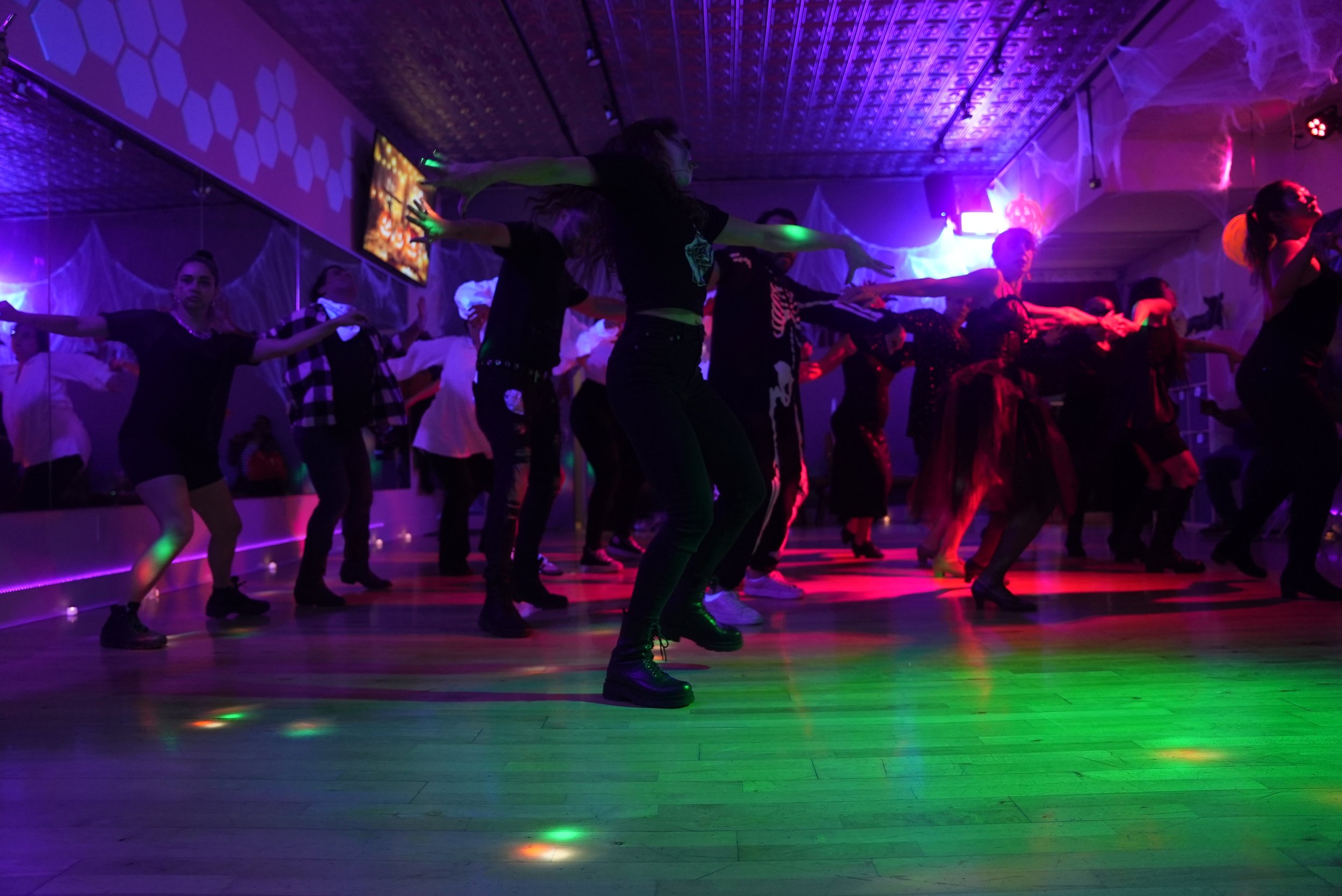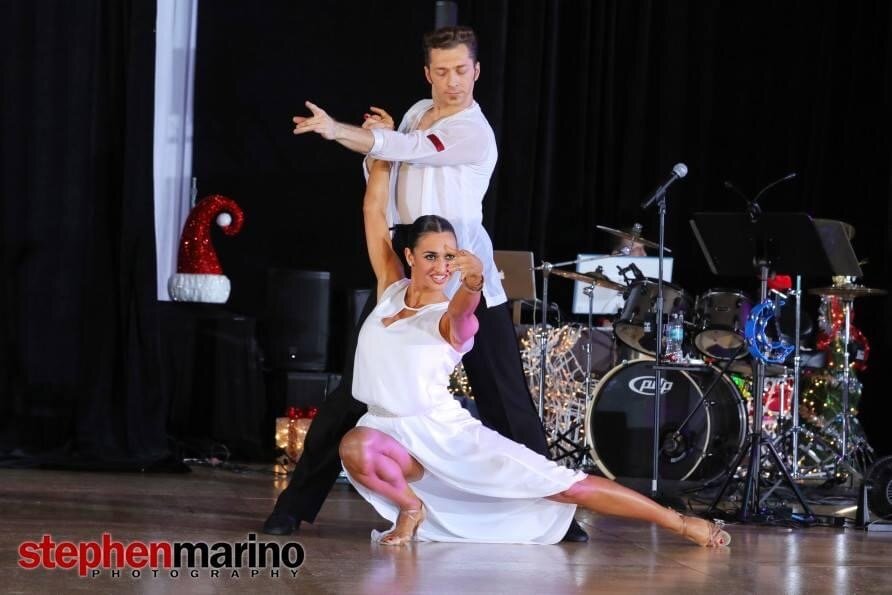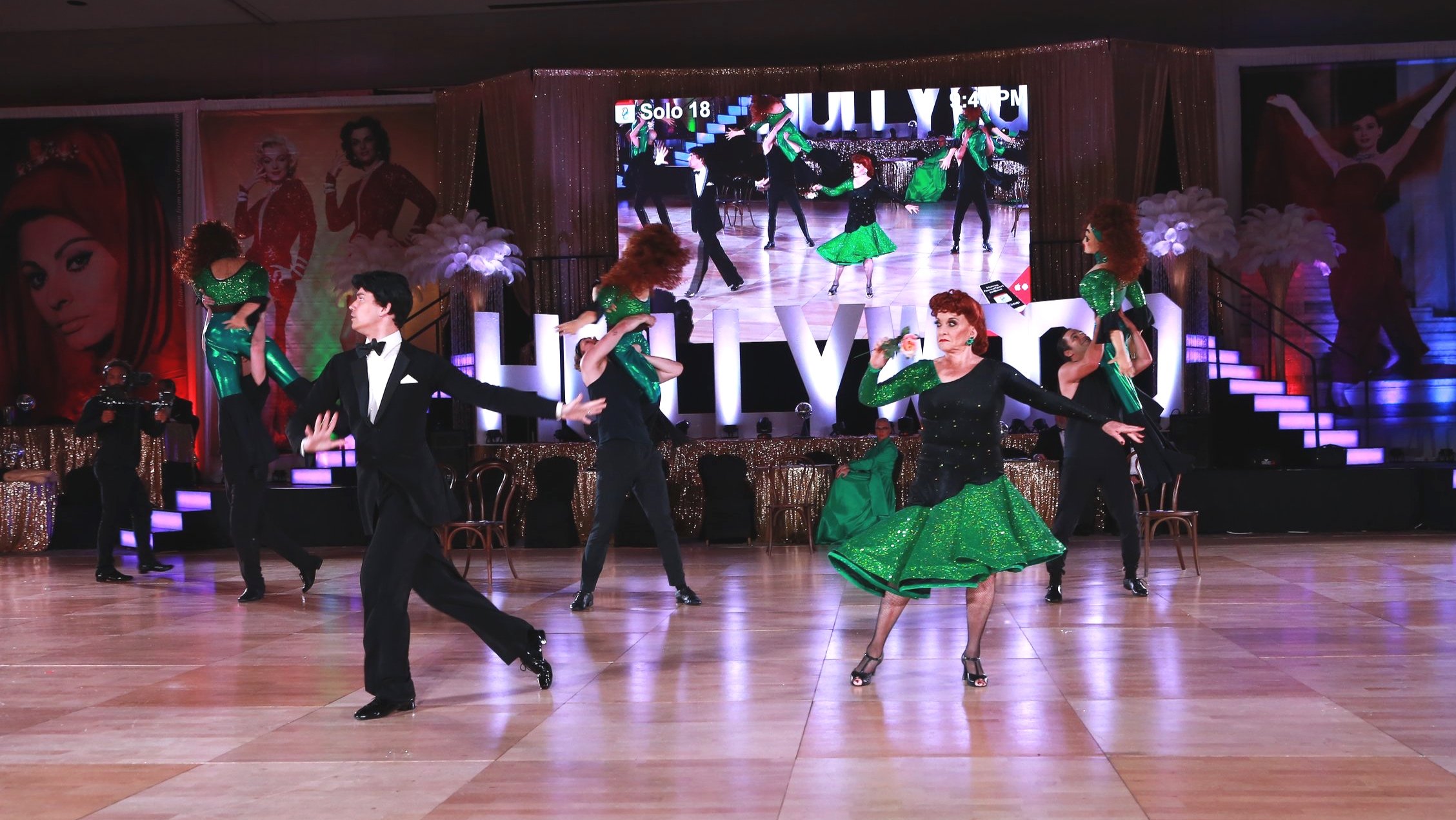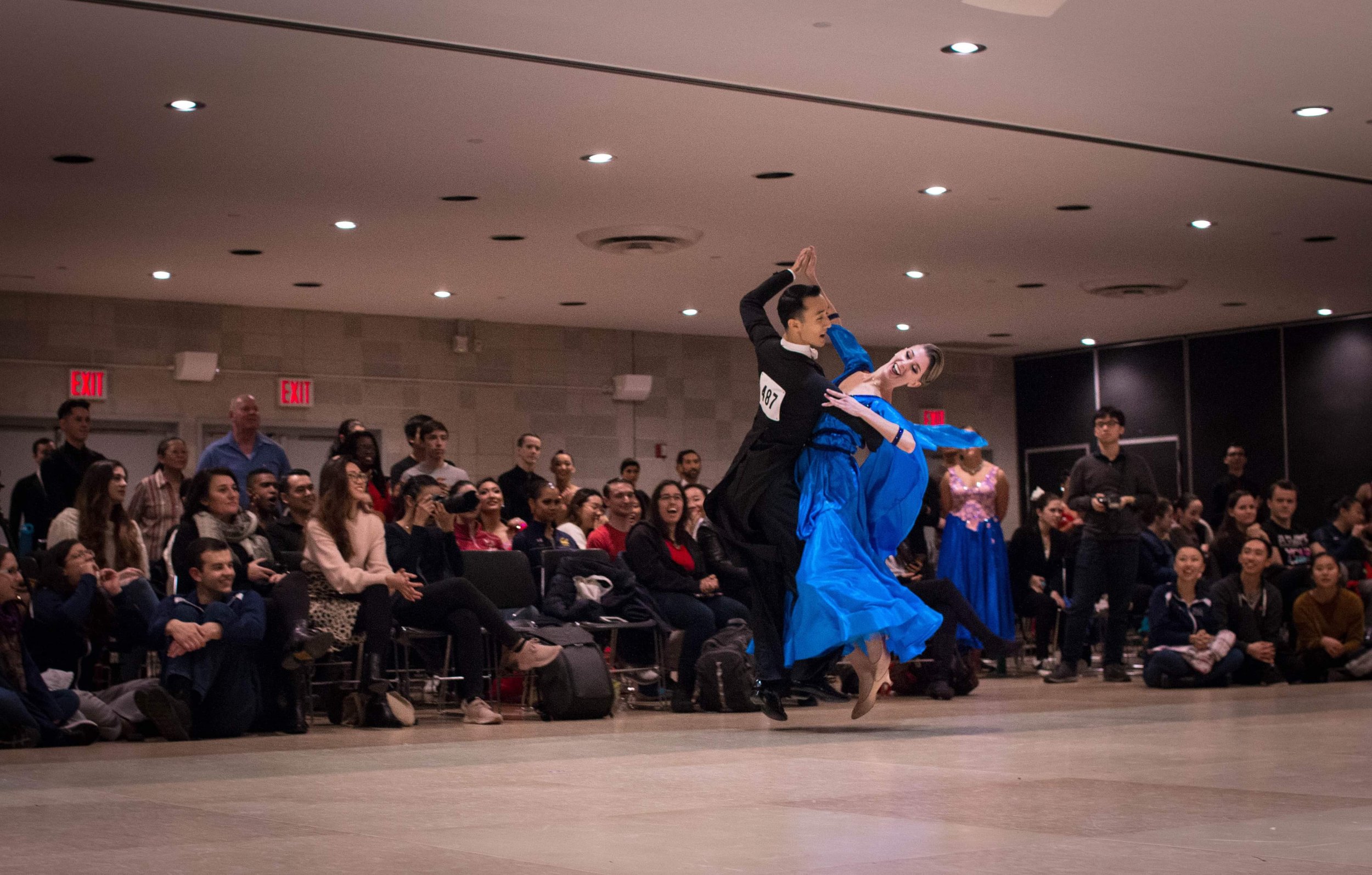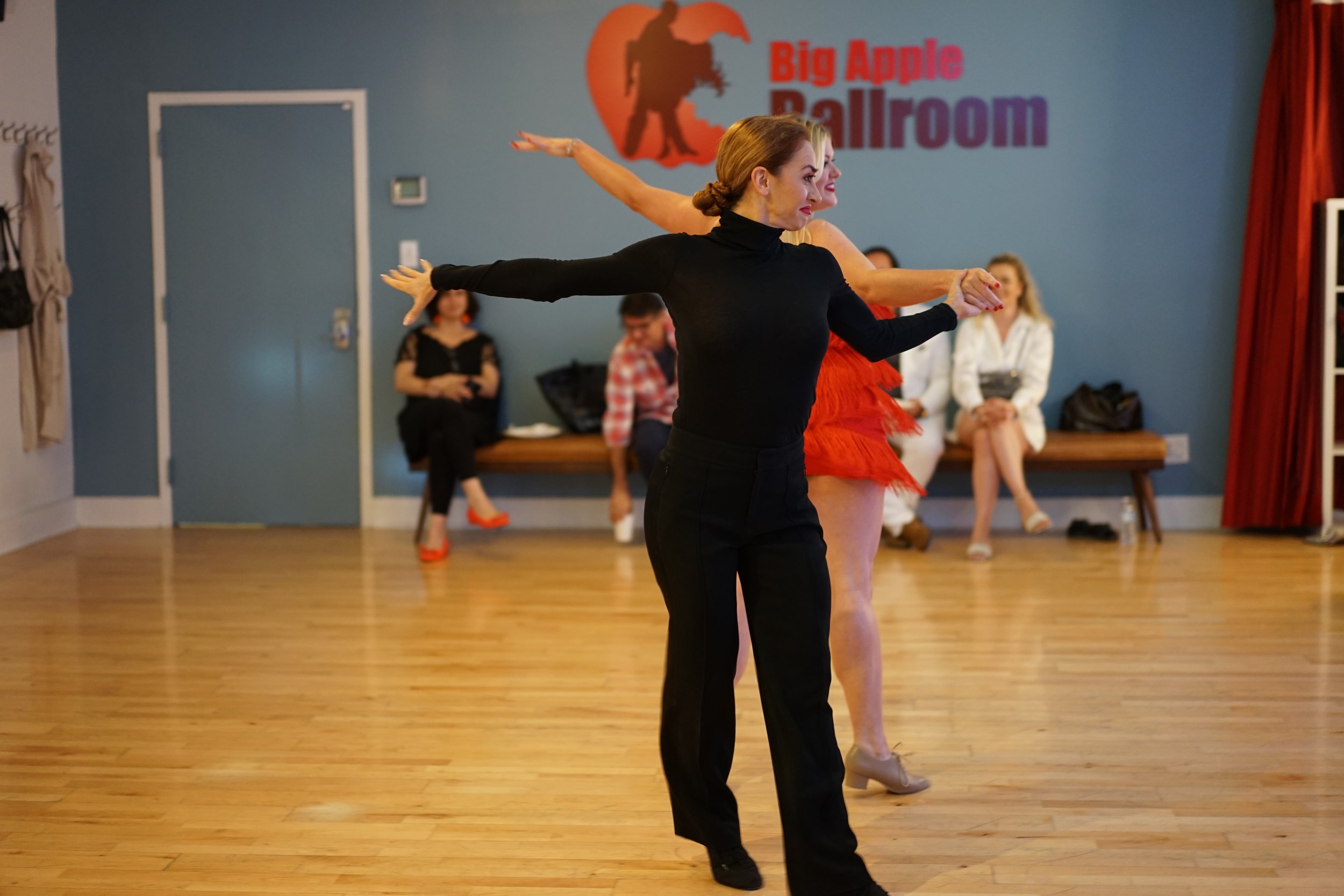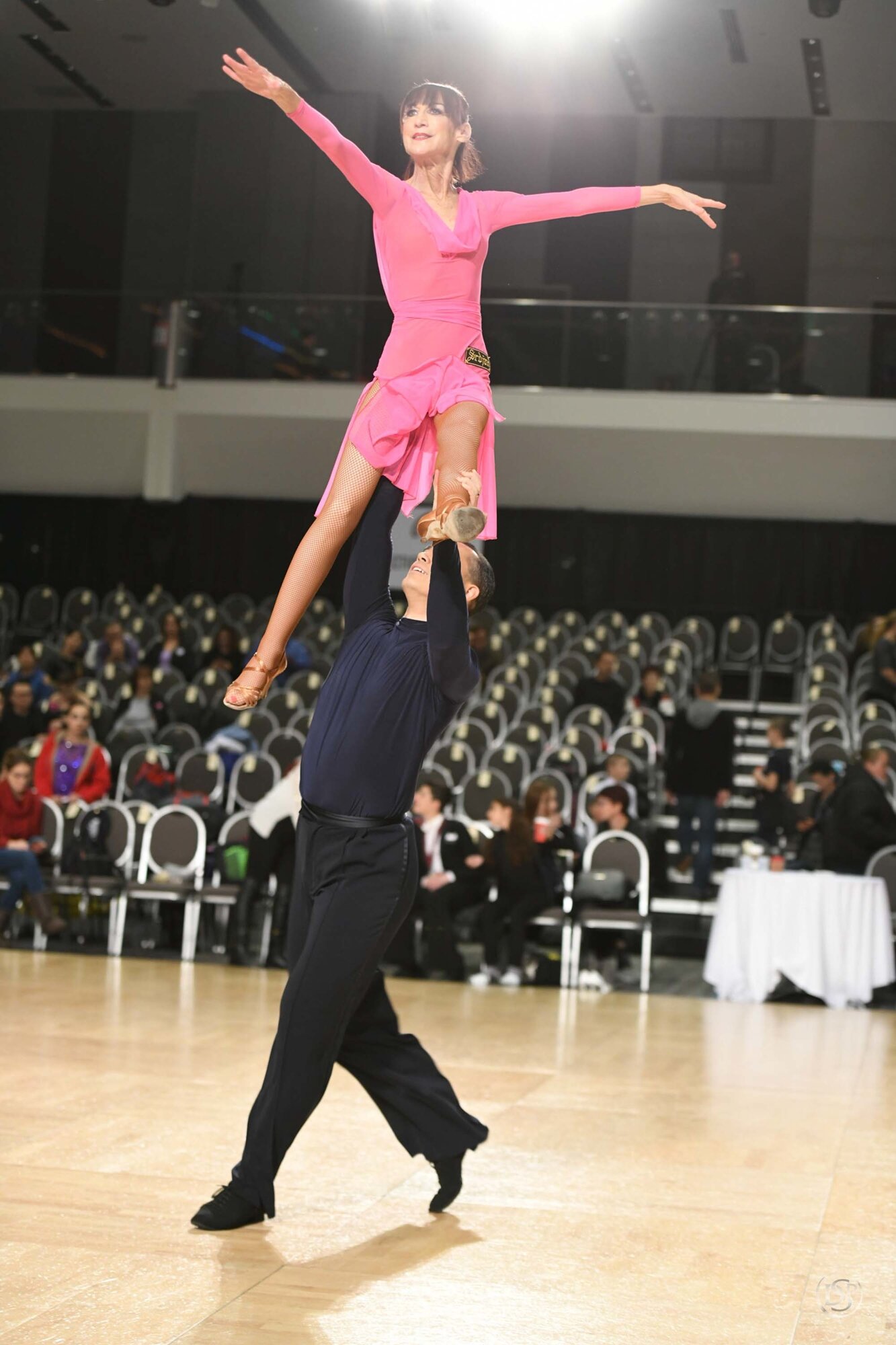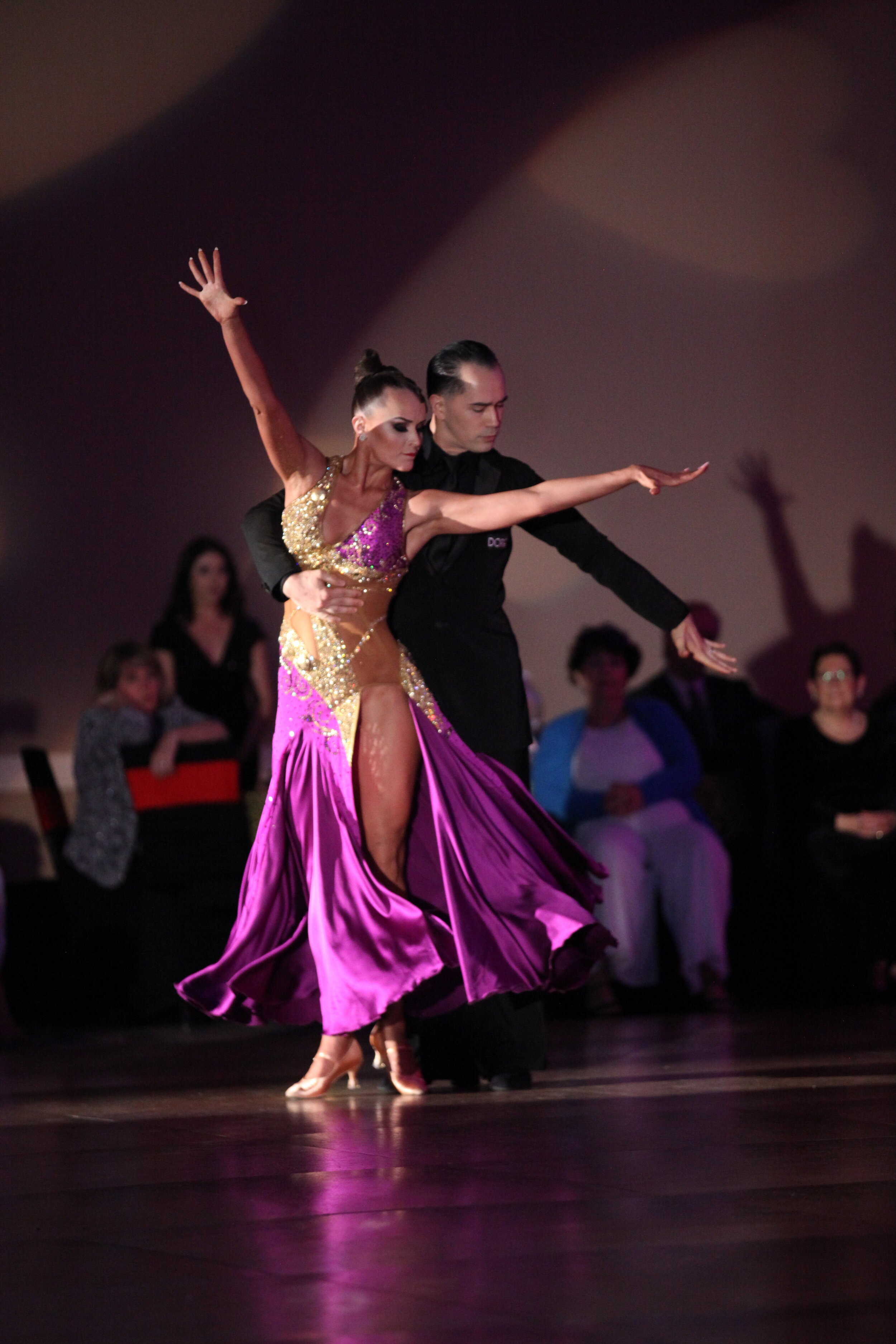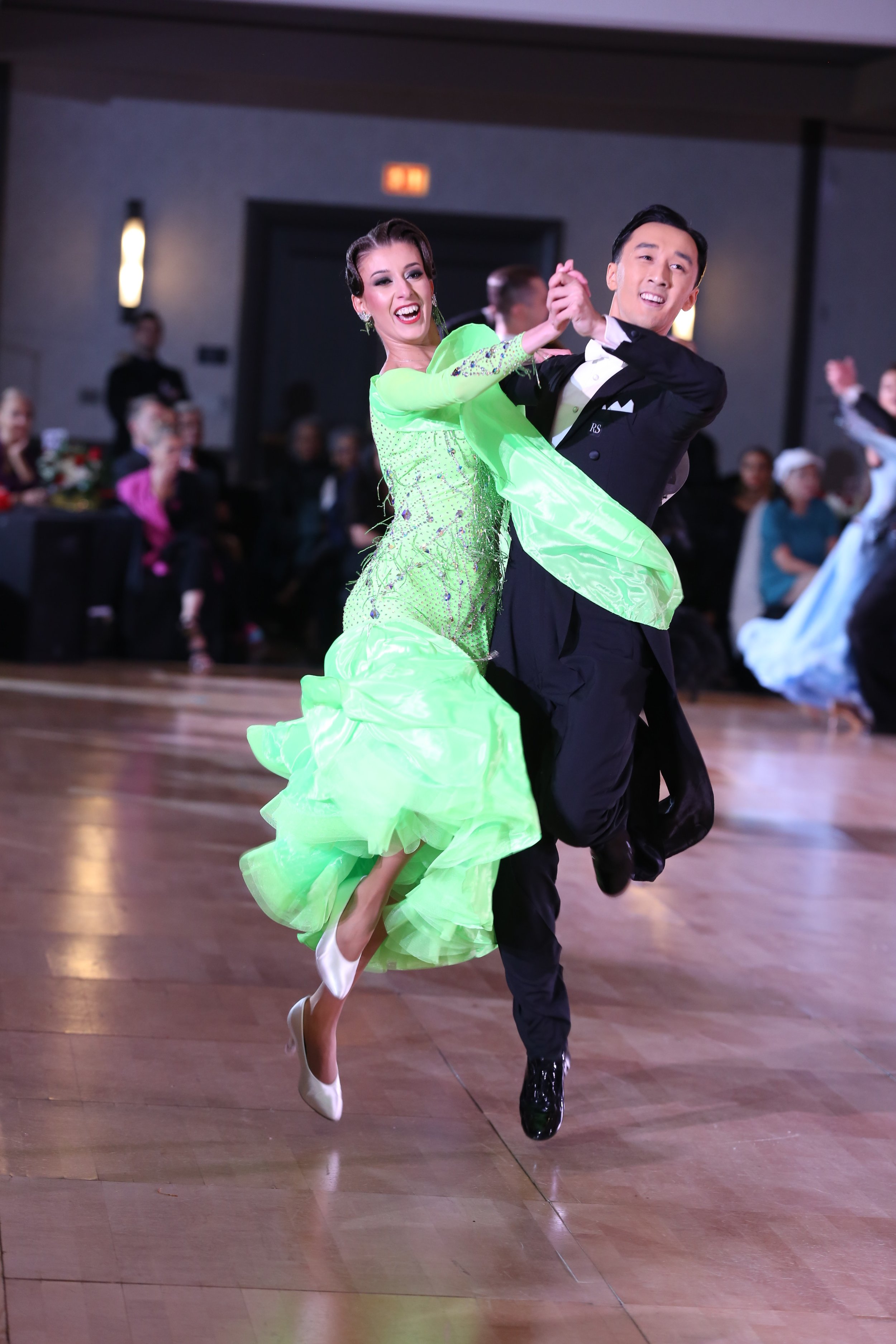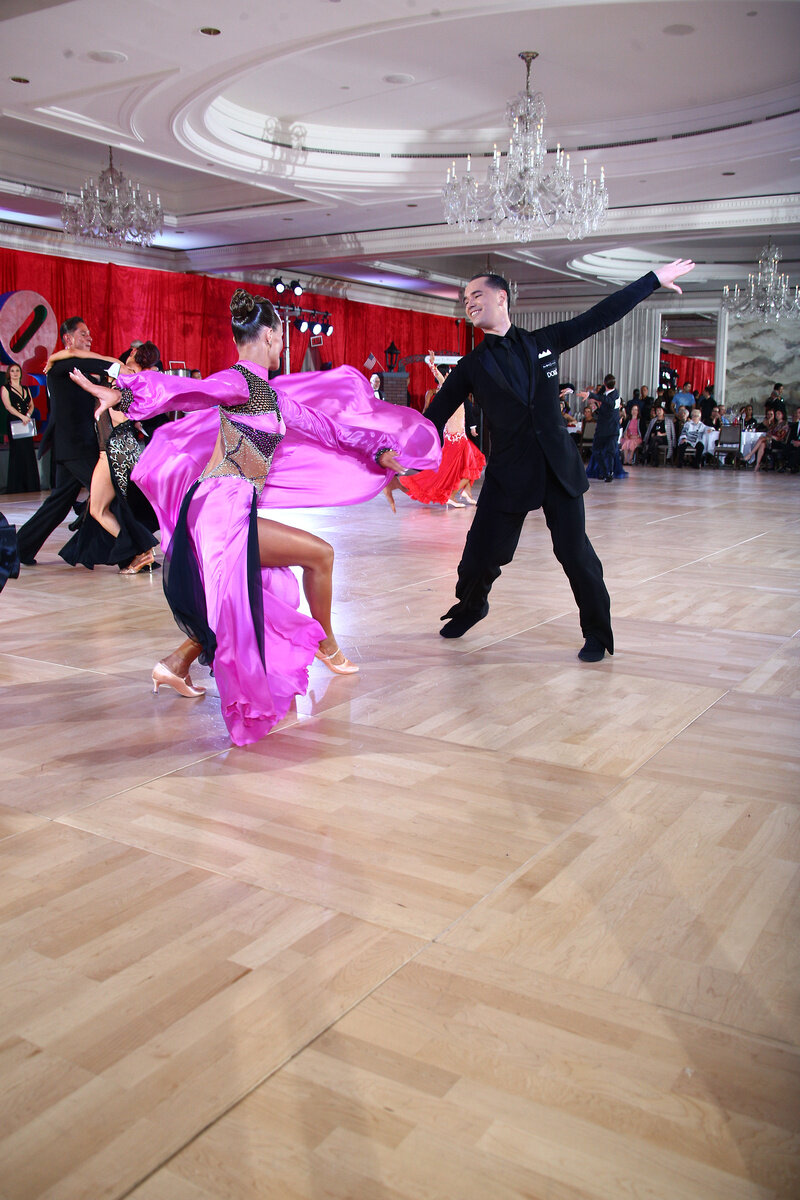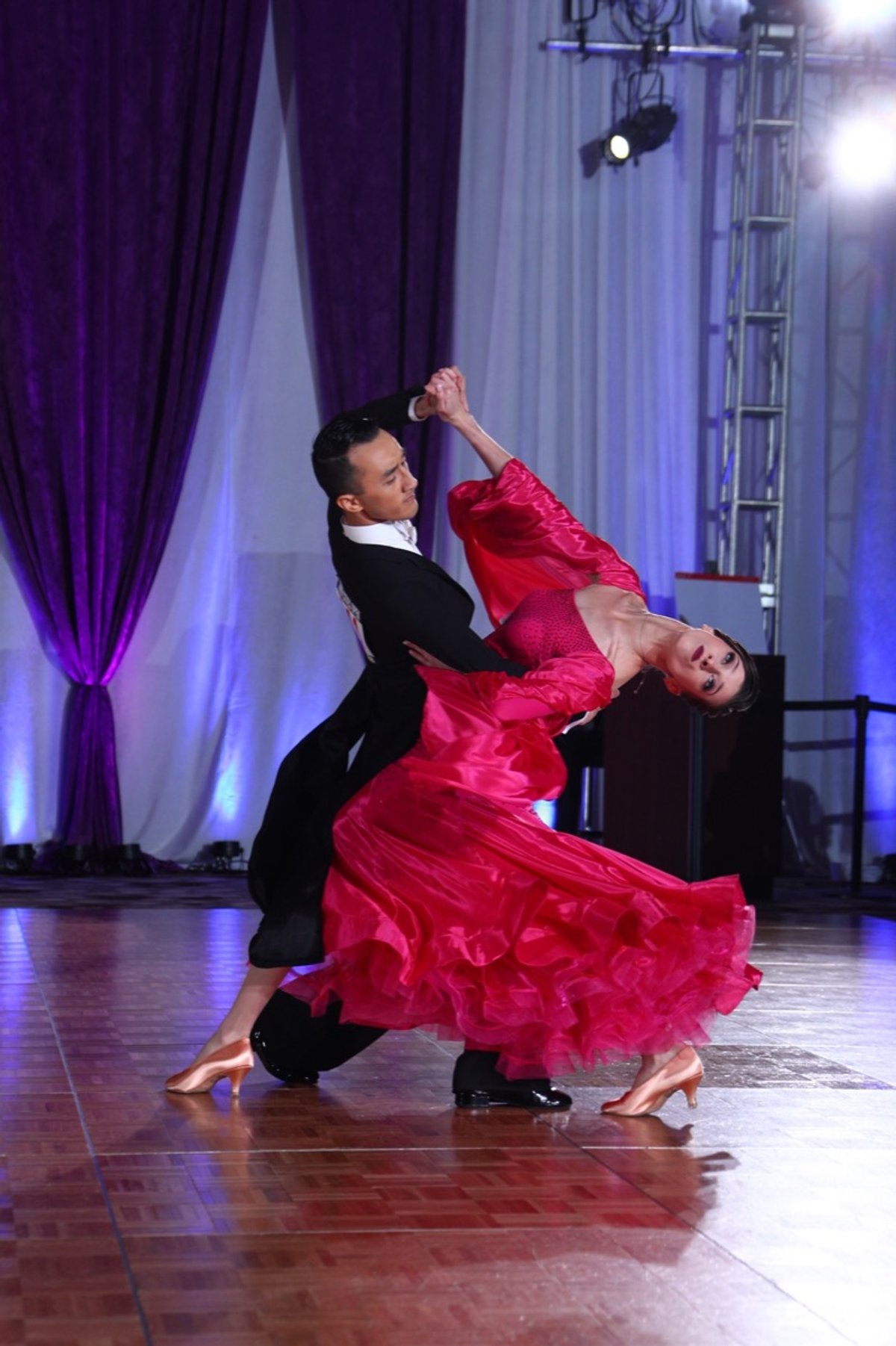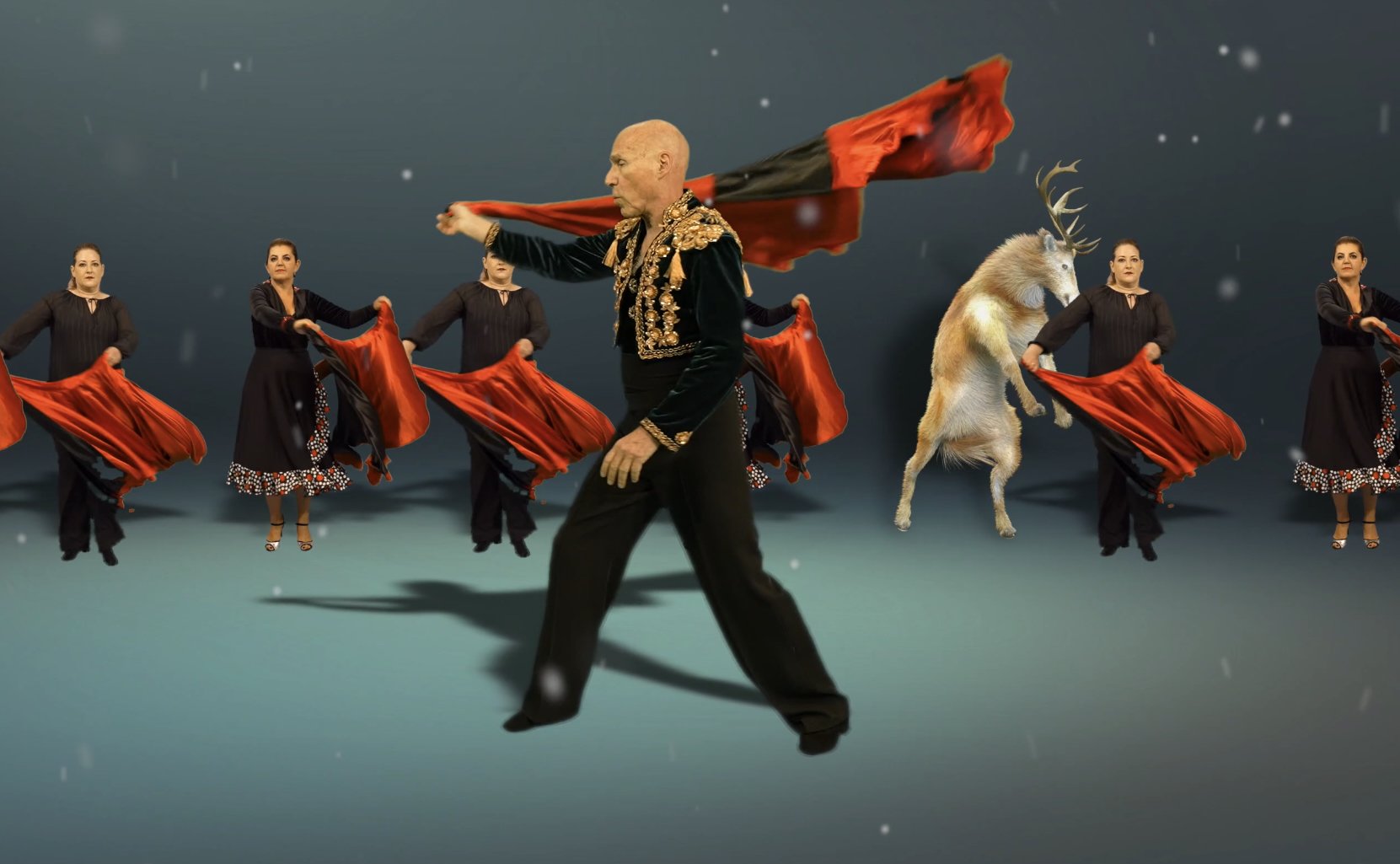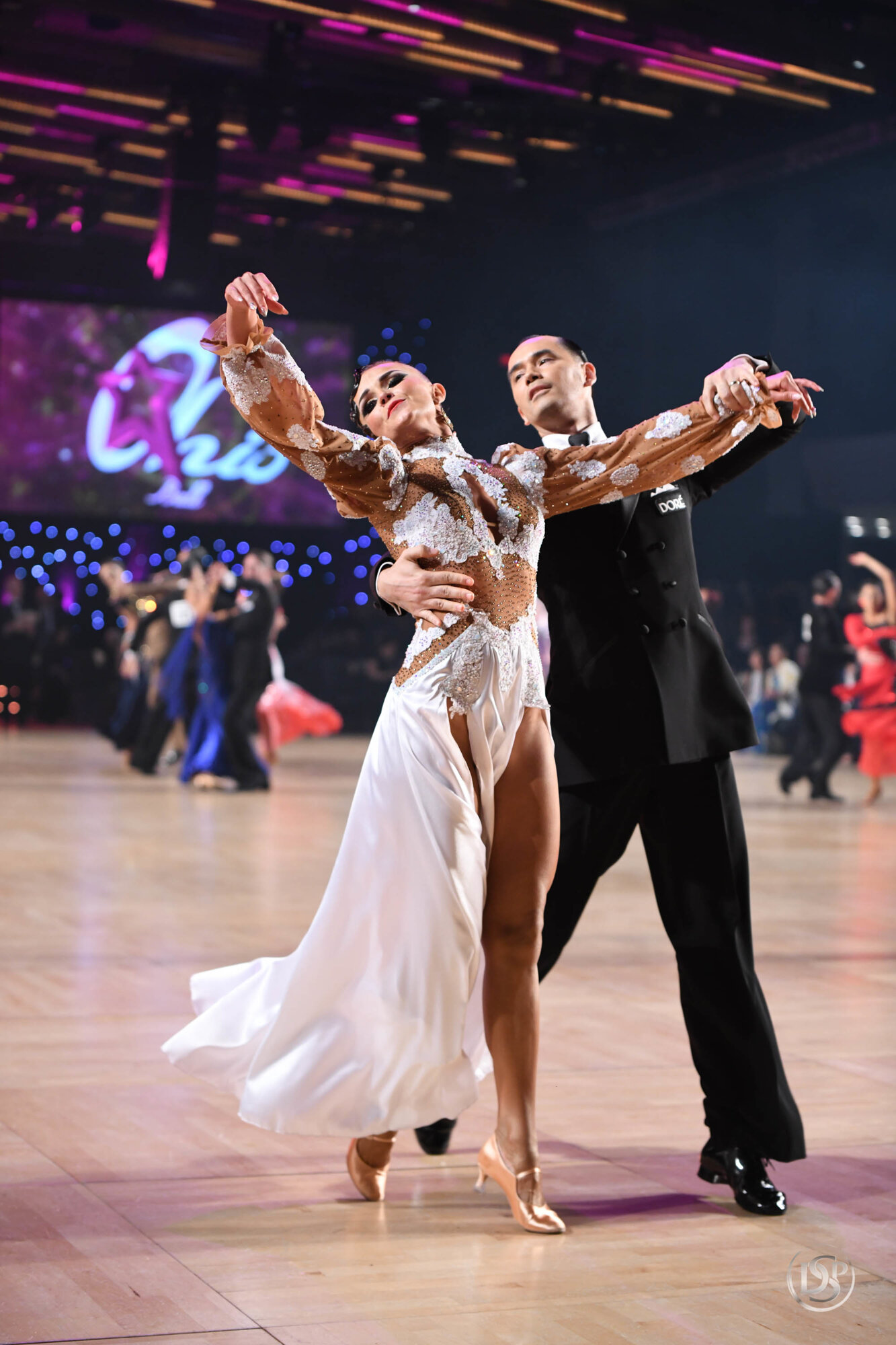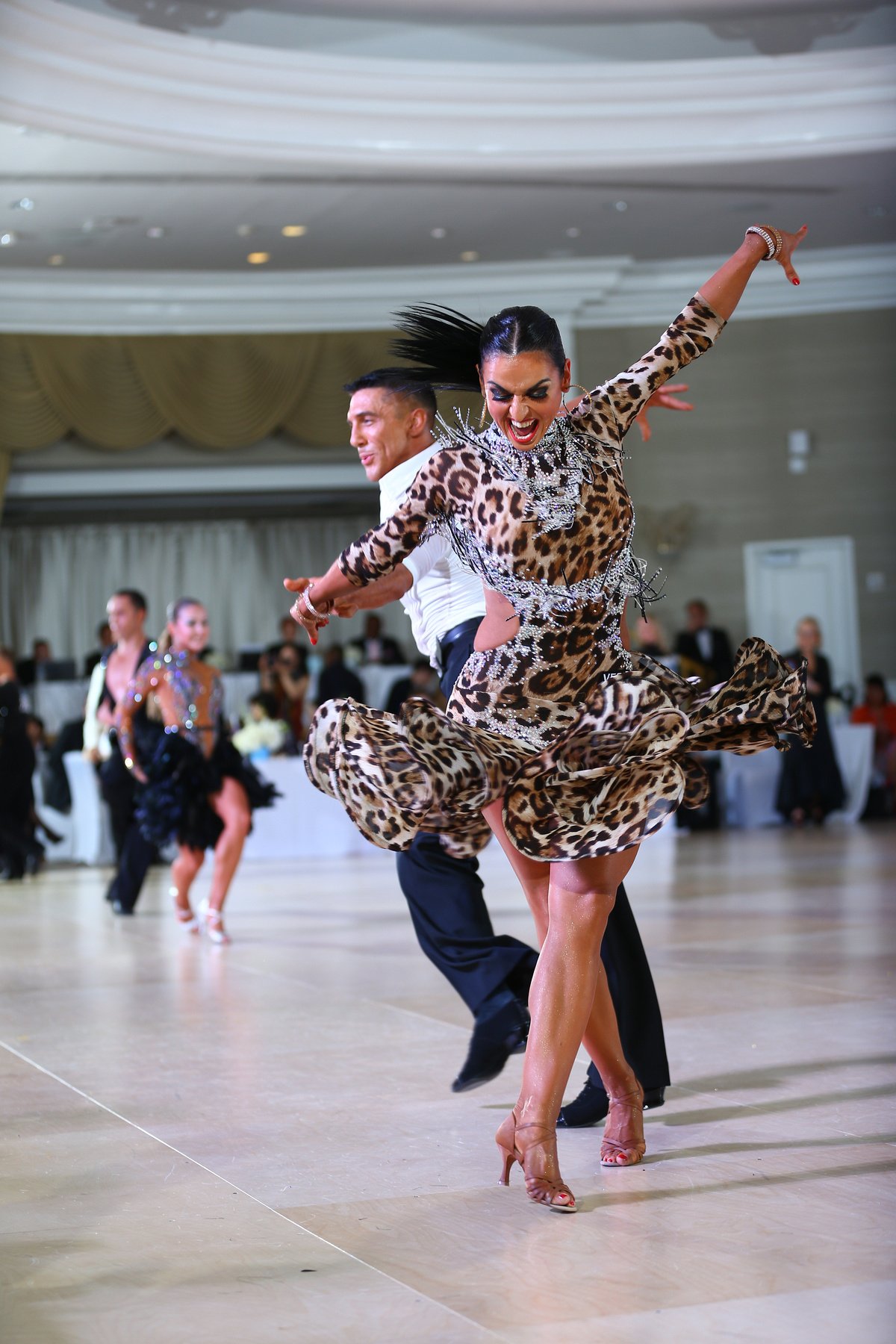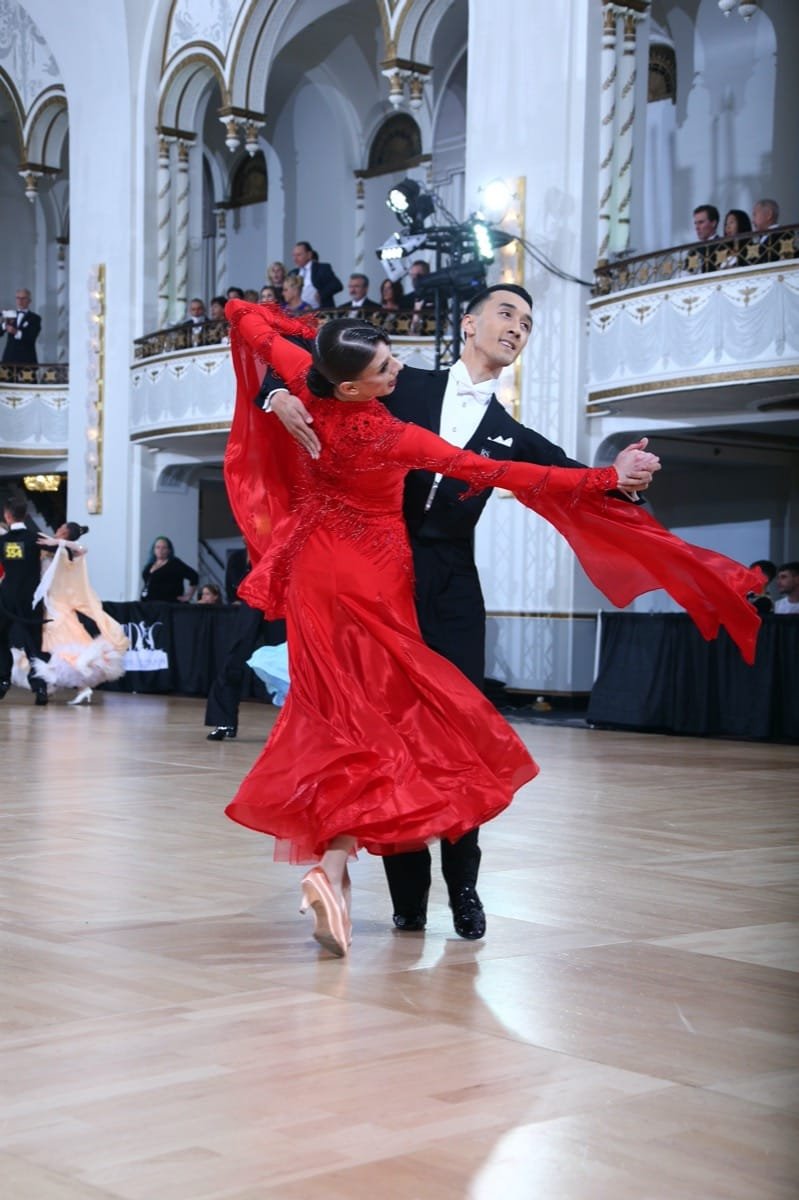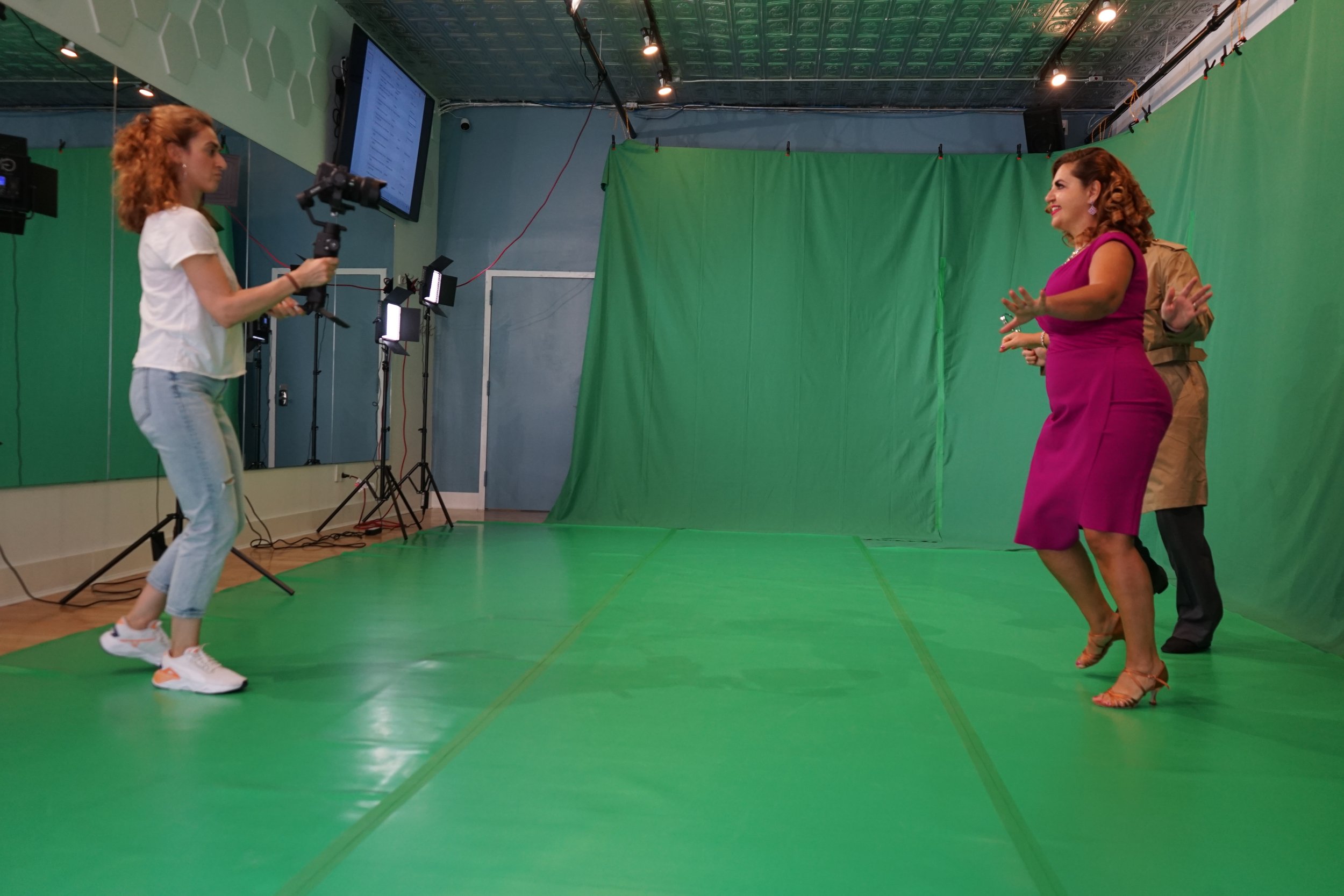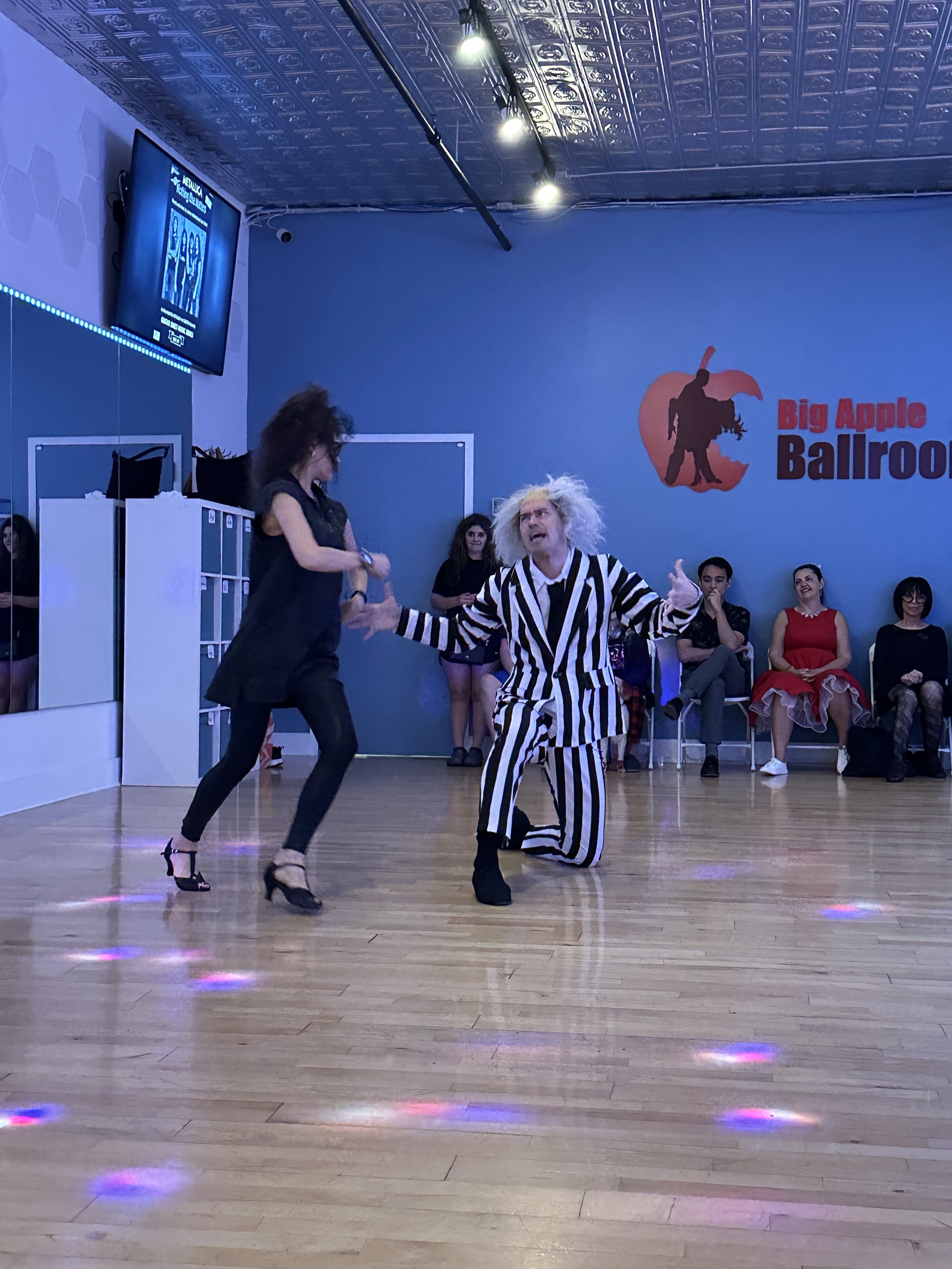Dance Performance in New York
At Big Apple Ballroom, we believe dance is meant to be shared. Our dance performance programs in New York give students the opportunity to take their skills beyond the studio and into the spotlight. Whether you dream of dazzling on stage, performing at a showcase, or entertaining at a special event, we’ll help you bring your passion for dance to life with confidence and artistry.
Why Choose Big Apple Ballroom for Dance Performance?
Professional Coaching – Our instructors are experienced performers who know what it takes to captivate an audience.
Custom Choreography – Every routine is tailored to your personality, skill level, and goals.
Opportunities to Shine – From in-studio showcases to community events and stage performances across New York, we give you the chance to perform in real settings.
Supportive Environment – Whether you’re stepping on stage for the first time or refining your stage presence, you’ll feel encouraged every step of the way.
Performance at Any Level – Beginners and seasoned dancers alike can discover the thrill of performing for an audience.
Types of Dance Performances in NYC
Our students participate in a variety of performance opportunities, including:
In-Studio Showcases – Perform in front of fellow students, friends, and family.
Gala Events – Elegant evenings where students present polished routines.
Community Performances – Share your dancing at festivals and local events in New York.
Professional Level Stages – For those ready to take their dancing to the next level, we also prepare students for theatrical and competition style performances.
Benefits of Dance Performance
Build stage confidence and presence
Express creativity through movement and storytelling
Celebrate milestones in your dance journey
Push yourself to new technical and artistic levels
Inspire others with your passion for dance
Who Is Dance Performance For?
Our dance performance programs in New York are open to:
Beginners who want to try performing in a supportive setting
Social dancers ready to showcase their progress
Wedding couples who want to create a choreographed routine for their special day
Advanced dancers preparing for competition or professional opportunities
Anyone who wants to experience the joy of performing for an audience
What to Expect in Our Performance Program
When you join our dance performance program in NYC, you’ll receive:
Personalized choreography crafted by our instructors
One-on-one coaching to refine technique and expression
Guidance on costuming, music, and presentation
Rehearsals to ensure you feel fully prepared
Opportunities to perform in front of supportive audiences
Frequently Asked Questions
Do I need prior performance experience?
Not at all. Many of our students perform for the very first time through our programs.
Can I perform solo or with a partner?
Both! We create solo, couple, and group routines depending on your preference.
Is performing required if I take lessons?
No. Performances are completely optional just an added opportunity for those who want to showcase their dancing.
Where do performances take place?
We host in-studio showcases, participate in local New York events, and prepare dancers for larger stages as well.
Join Our Dance Performance Program in New York
At Big Apple Ballroom, our dance performance opportunities in NYC give you the chance to step into the spotlight and share your love of dance. With expert coaching, supportive audiences, and unforgettable experiences, performing has never been more rewarding.
Don’t just learn dance live it, perform it, and let your artistry shine.


